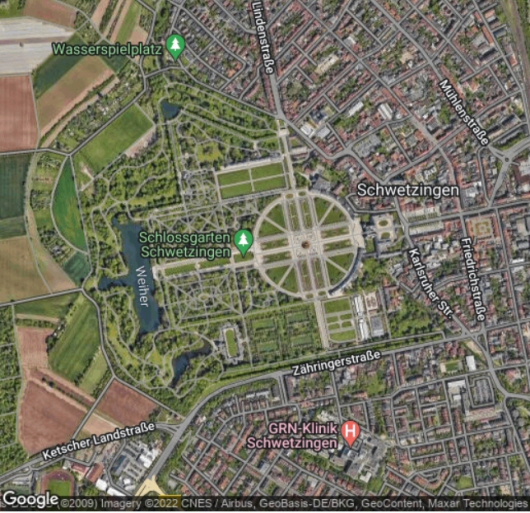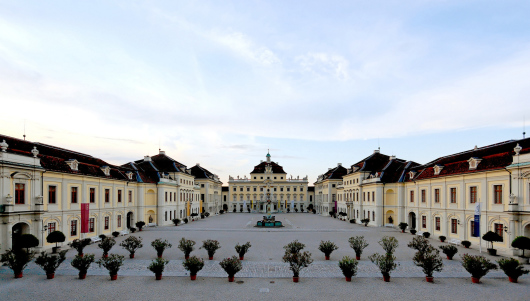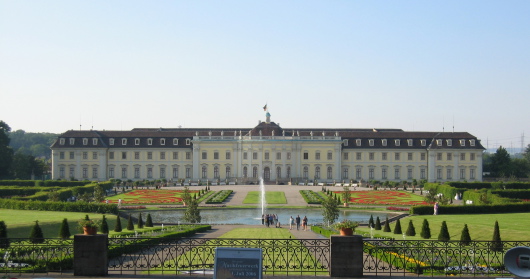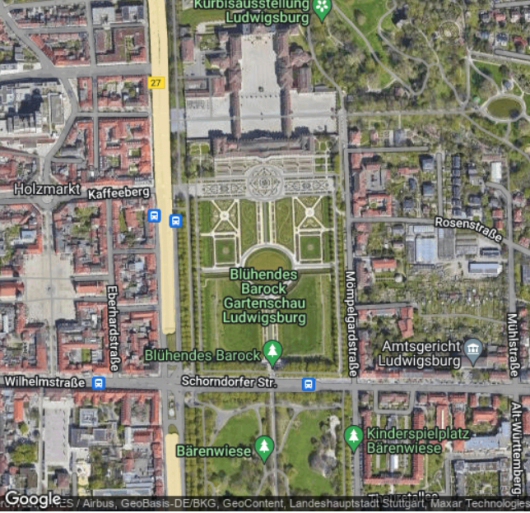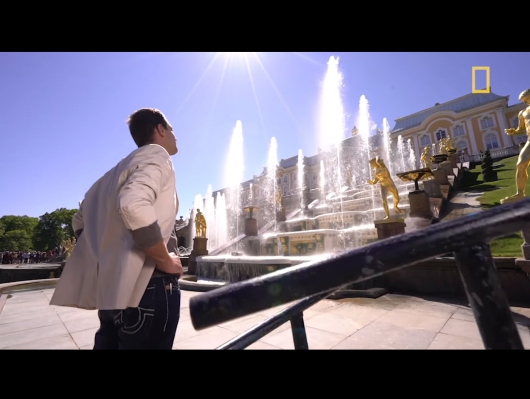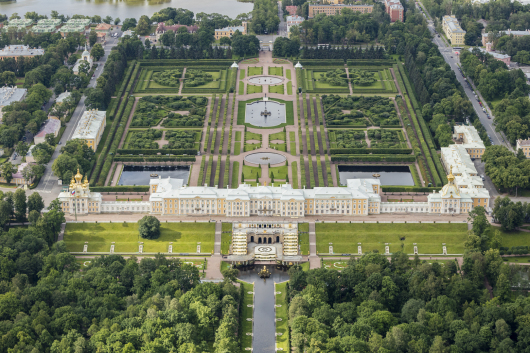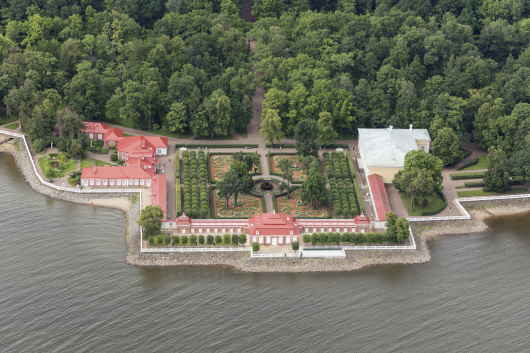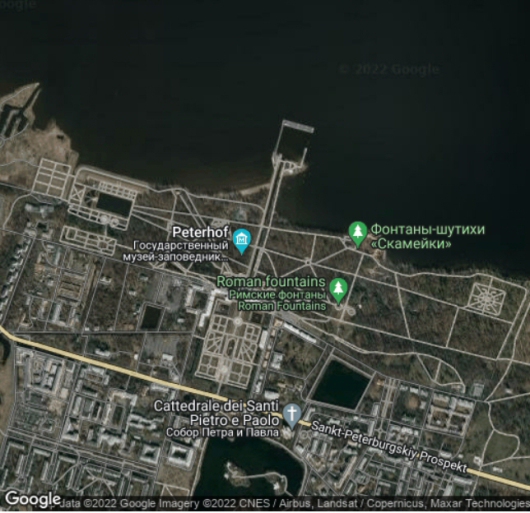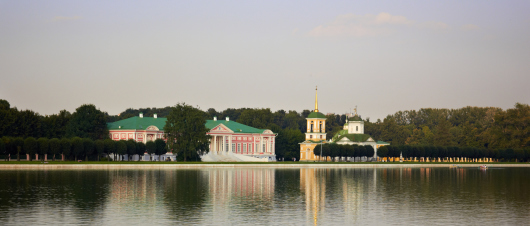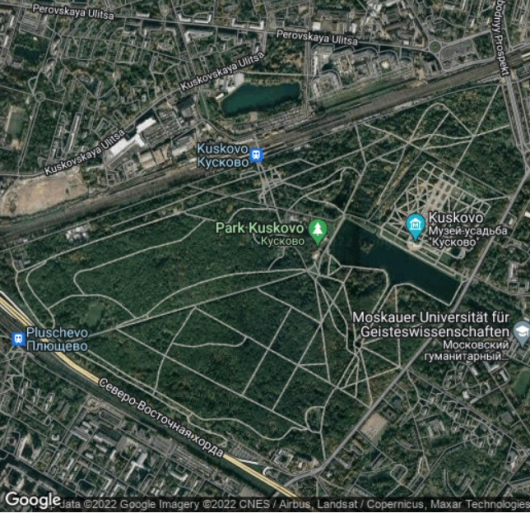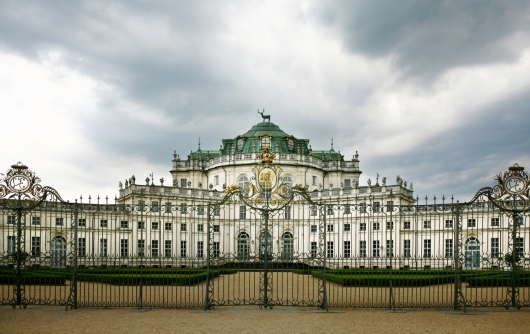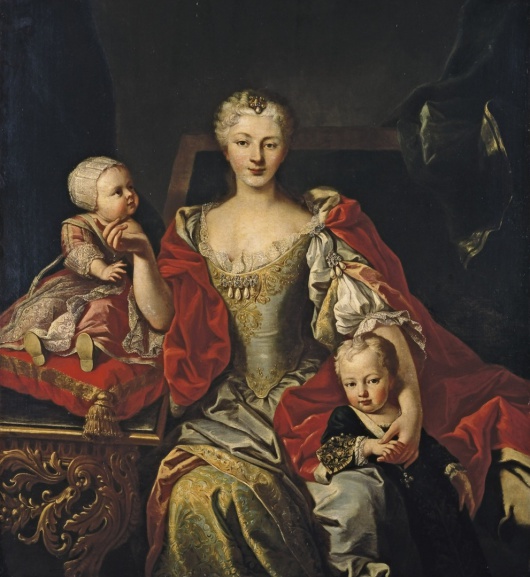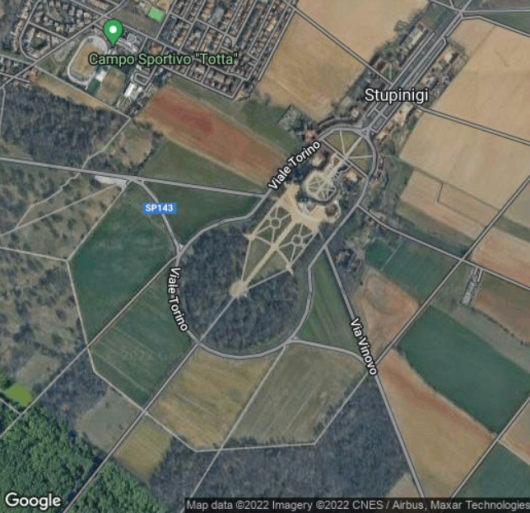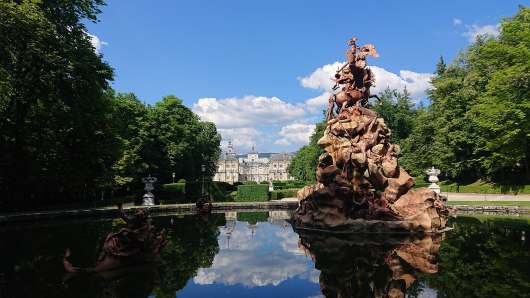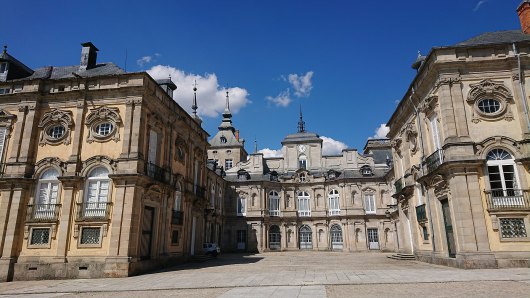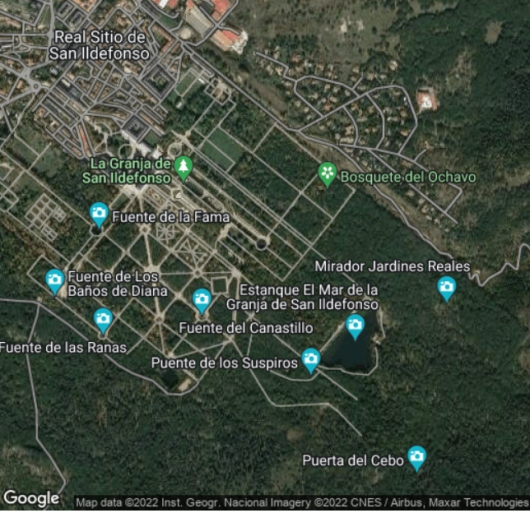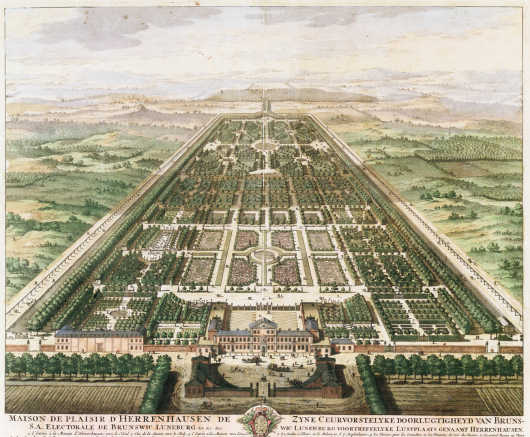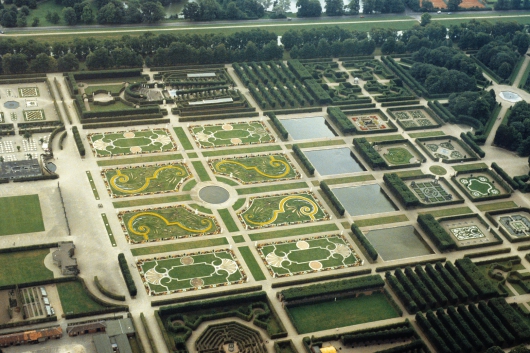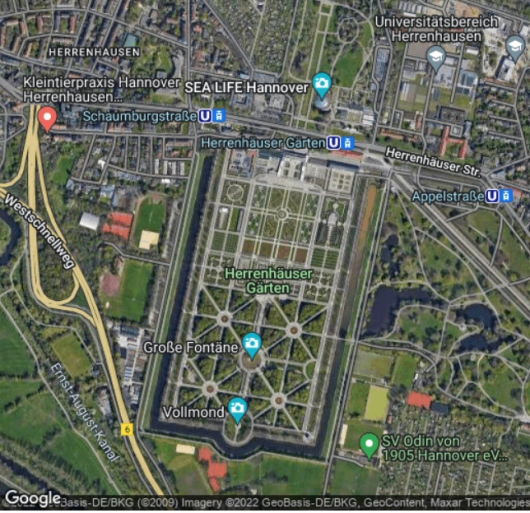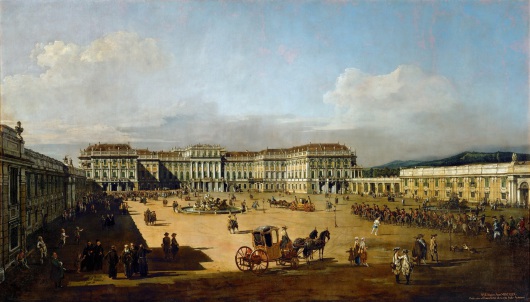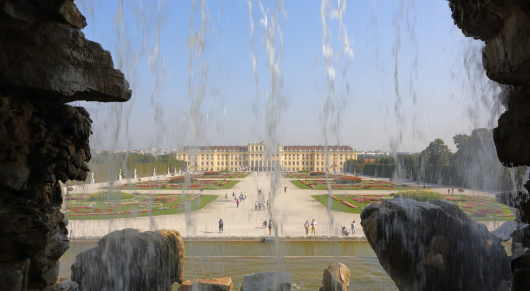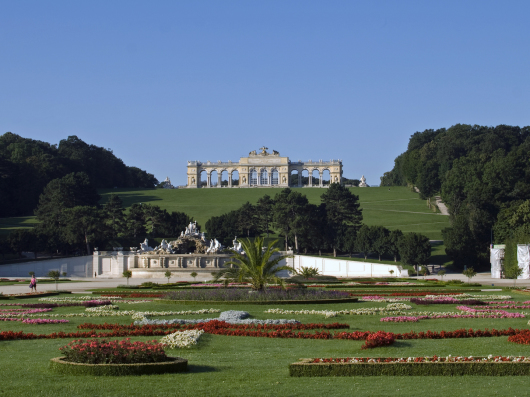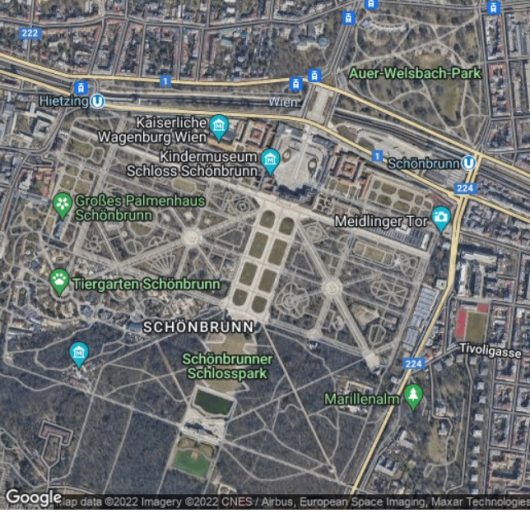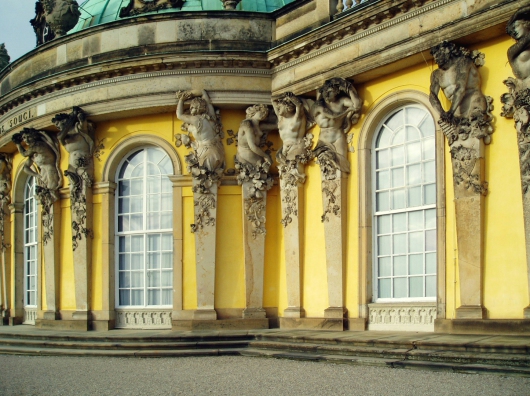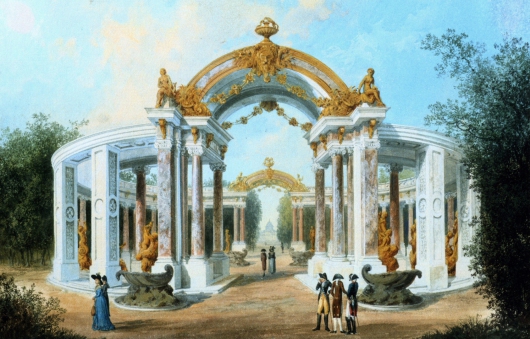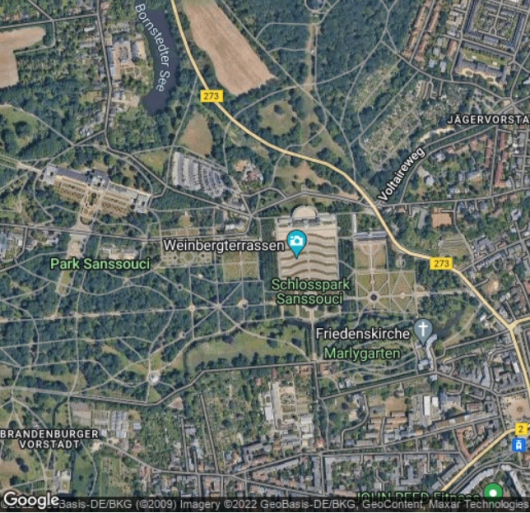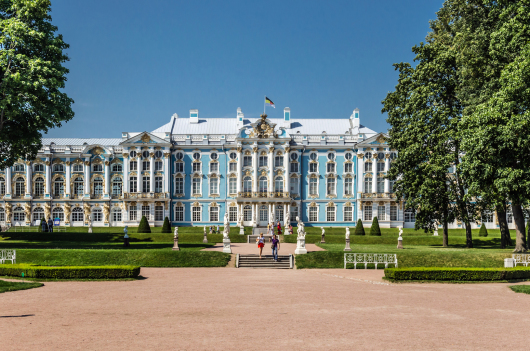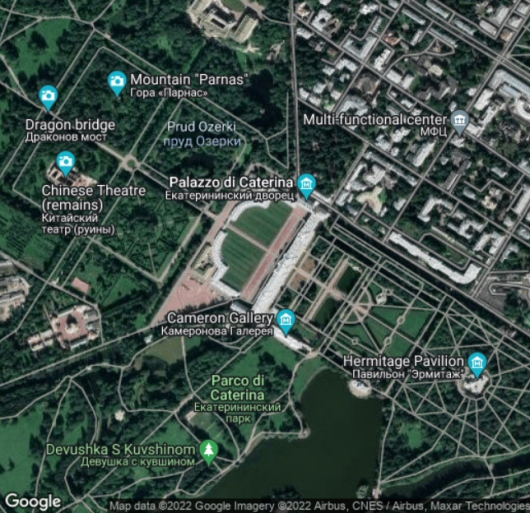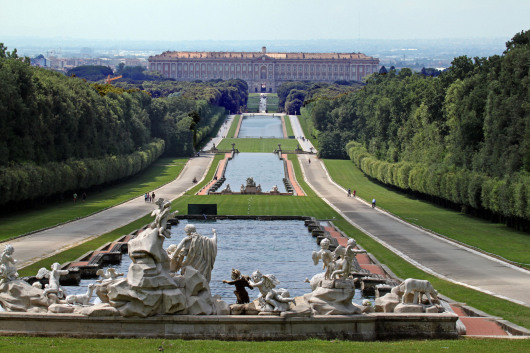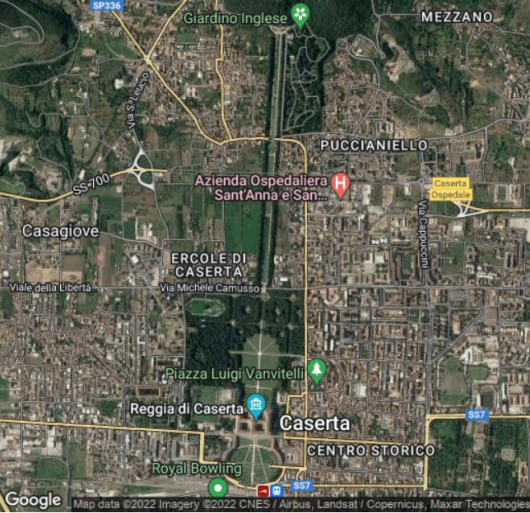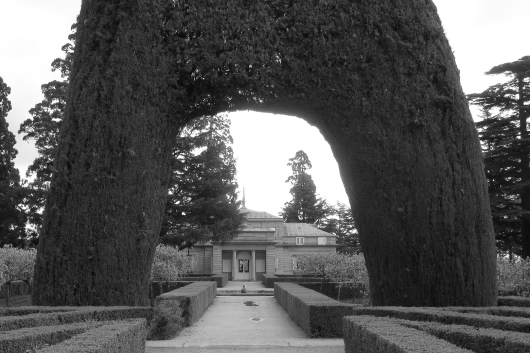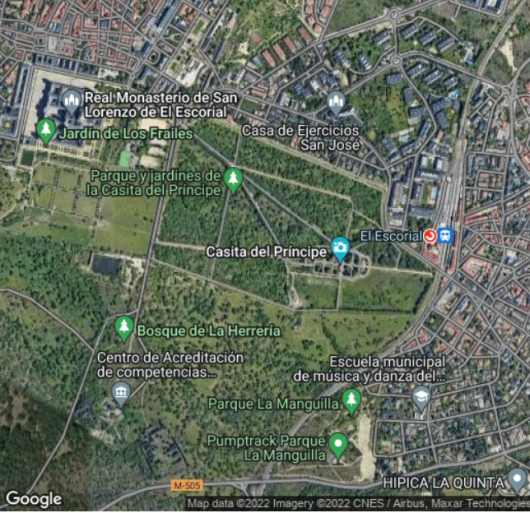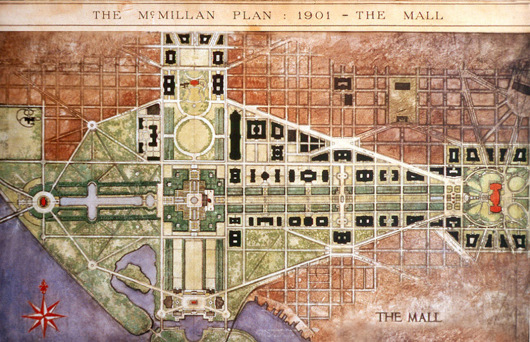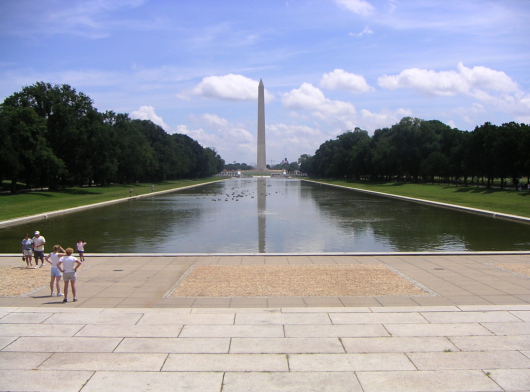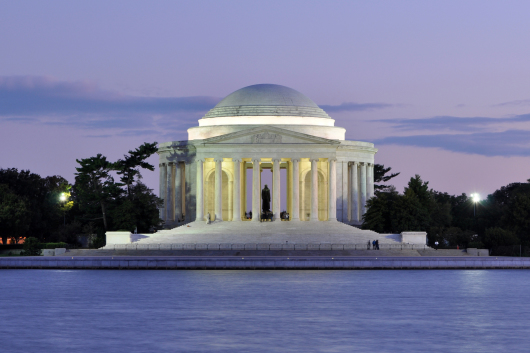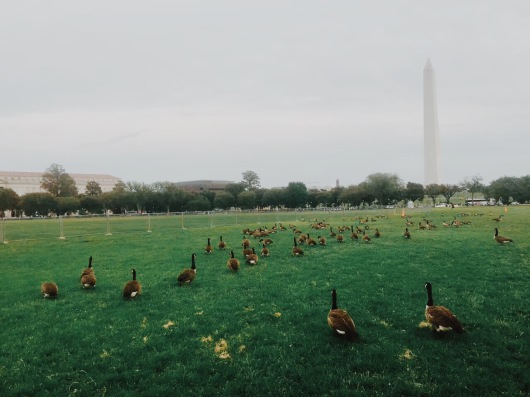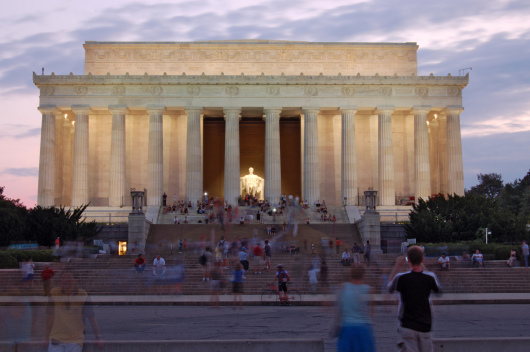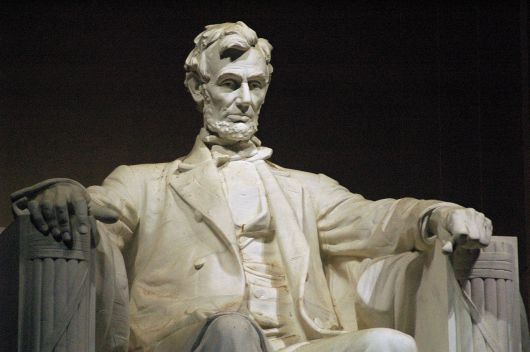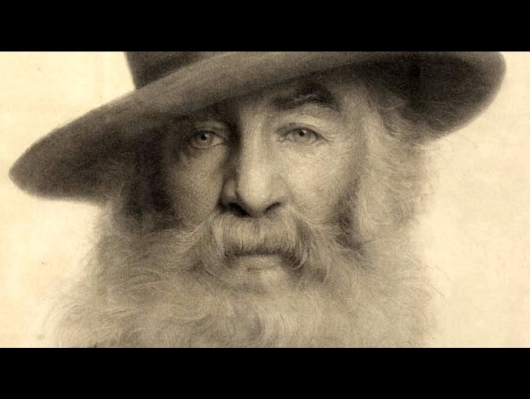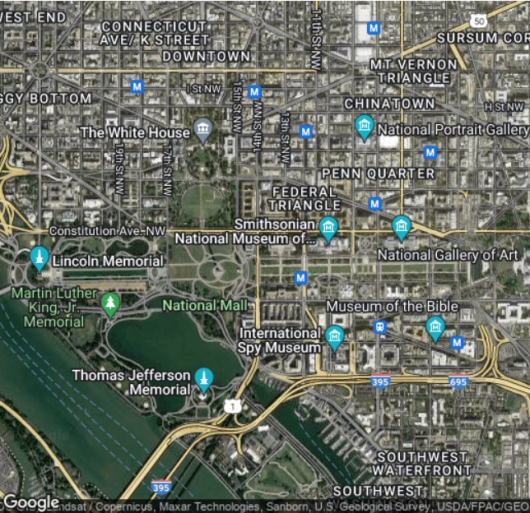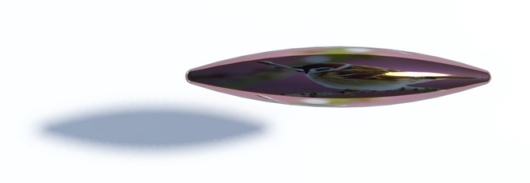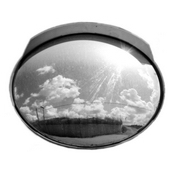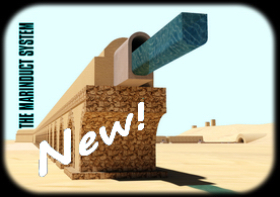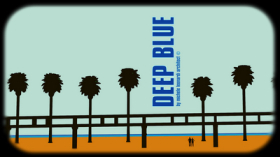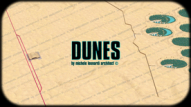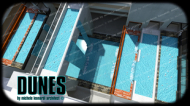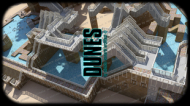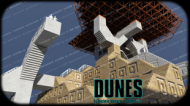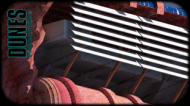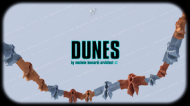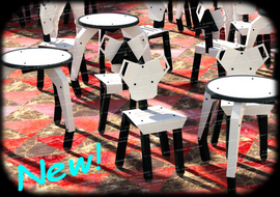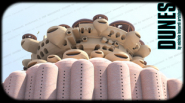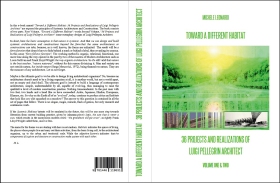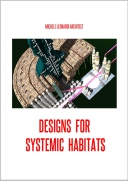Gardens 3
BAROQUE AND LATE
BAROQUE GARDENS
The Schwetzingen Palace
in Schwetzingen, near Heidelberg, Germany; 1700-1750; architects: Johann Adam Breunig, Alessandro Galli Bibiena, Peter Anton von Verschaffelt, and others.
More info on Wikipedia: Shloss Schwetzingen.
"Luftaufnahme des Barockgartens", Luftbild des Schlossgarten Schwetzingen, Schloss Schwetzingen, Baden-Württemberg, photograph by Schlurcher. Source: Wikipedia.
"Schwetzingen, Schloß, nördlicher Zirkelbau", Schloss Schwetzingen, Baden-Württemberg, photograph by Berthold Werner. Source: Wikipedia.
The Ludwigsburg Palace
in Ludwigsburg, Germany; c. 1704; architects: Philipp Joseph Jenisch, Johann Friedrich Nette, Donato Giuseppe Frisoni, Leopoldo Retti.
More info on Wikipedia: Residenzschloss Ludwigsburg.
"Schloss Ludwigsburg", Ehrenhof mit Blick auf das "Alte Corps de Logis", photograph by Sebastian Bergmann . Source: Wikipedia.
"The Schloss Ludwigsburg Palace, with the Baroque gardens of Schloss Ludwigsburg", in Ludwigsburg, Germany; photograph by Alexander Johmann. Source: Wikipedia.
The Perterhof Palace
in Perterhof, near Saint Petersburg, Russia; 1714-1723; architects: Jean-Baptiste Alexandre Le Blond, Bartolomeo Rastrelli. More info on Wikipedia: Петергоф.
"This Russian Palace is Home to 150 Fountains", National Geographic. Language: English.
"Aerial view of Peterhof Palace", Saint Petersburg, Russia; photograph by Andrew Shiva; source: Wikipedia.
"Aerial view of Monplaisir Palace and Gardens" at Peterhof Palace, Saint Petersburg, Russia; photograph by Andrew Shiva; source: Wikipedia.
The Kuskovo
in Moscov, Russia; c. 1730-1790 and later; architects: Ju.I. Kologrivov, Fëdor S. Argunovzbr, Karl Blank, Charles De Wailly. More info on Wikipedia: Кусково.
""View of Kuskovo"; photograph by Max Ryazanov; source: Wikipedia.
La Palazzina di caccia
di Stupinigi
in Nichelino, near Turin, Italy; c. 1733; architect: Filippo Juvarra.
More info on Wikipedia: Palazzina di caccia di Stupinigi.
"La Palazzina di caccia of Stupinigi", Torino, Piedmont; photograph by Paolobon140; source: Wikipedia.
Martin van Meytens (1695-1770), painter: "Portrait of Polyxena Christina of Hesse-Rotenburg with her two oldest children", the future Vittorio Amedeo III and Eleonora: ca. 1729; Collection: Palace of Venaria Reale, Turin, Italy; photograph by Christies, London, U.K.; source: Wikipedia.
The Royal Palace
of La Granja
de San Ildefonso
in San Ildefonso, near Segovia, Spain; c. 1734; architects: Teodoro Ardemans, Andrea Procaccini, Sempronio Subisati,Filippo Juvarra and others. More info on Wikipedia: Palacio Real de La Granja de San Ildefonso.
"The Fame" fountain and lateral garden facade of La Granja; photograph by Heparina1985; source: Wikipedia.
""Patio de la Herradura courtyarda"; photograph by Heparina1985; source: Wikipedia.
The Herrenhausen Gardens
in Herrenhausen, Germany; c. 1676-1763; architects: Martin Charbonnier and others. More info on Wikipedia: Herrenhäuser Gärten.
Vogelschau, historische Ansicht des Großen Gartens in Hannover-Herrenhausen, Kupferstich, um 1708. Source: Wikipedia.
"Aerial view of the Northern half of the Great Garden"; photograph by Jens Bludau. Source: Wikipedia.
The Schönbrunn Palace
in Hietzing, Vienna, Austria; 1696-1780; architects: Johann Bernhard Fischer von Erlach, Nicolò Pacassi. More info on Wikipedia: Schönbrunn Palace.
"Schönbrunn" by Bernardo Bellotti called "Il Canaletto", painter, 1758. Collection: Kunsthistorisches Museum Wien, Austria. Source: Wikipedia.
"The Schönbrunn seen through Neptune Fountain", photograph by Martin Falbisoner. Source: Wikipedia.
"The Gloriette, the Neptune Fountain and Great Parterre", photograph by HeinzLW. Source: Wikipedia.
The Sanssouci Gardens
in Potsdam, Germany; c. 1745; architect: Georg Wenzeslaus von Kvobelsdorff.
More info on Wikipedia: Schloss Sanssouci.
"Luftbild vom Schloss Sanssouci, 2008. Links die Neuen Kammern und die Historische Mühle, rechts die Bildergalerie"; photograph by Sven Scharr. Source: Wikipedia.
"Bacchanten an der Südseite"; photograph by Suse. Source: Wikipedia.
"Ehemalige Marmorkolonnade im Rehgarten", folgt der 1684 von Mansarde in Versailles geschaffenen Kolonnade: Aquarell von Johann Friedrich Nagel, um 1792. Source: Wikipedia.
The Catherine Palace
in Saint Petersburg, Russia; 1752-1756; architect: Bartolomeo Rastrelli. More info on Wikipedia: Большой Екатерининский дворец.
"The Catherine Palace in Tsarskoe Selo, Saint Petersburg", photograph by Alex Florstein Fedorov © , Wikimedia Commons. Source: Wikipedia.
Royal Palace of Caserta
Caserta, Italy; c. 1774; architects: Luigi Vanvitelli (Luigi van Wittel-Lorenzani) and Carlo Vanvitelli. More info on Wikipedia: La Reggia di Caserta.
"La Reggia di Caserta: prospettiva dalla fontana di Venere e Adone", photograph by Carlo Pelagalli. Source: Wikipedia.
The House of the Prince
in El Escorial, near Madrid, Spain; 1770-1780; architect: Juan de Villanueva.
More info on Wikipedia: La Casita del Príncipe.
"En el parque de la Casita del Príncipe, El Escorial", near Madrid; photograph by Michele Leonardi.
The National Mall
in Washington, United States of America; project: year 1791 and later, architects:
Pierre Charles L'Enfant, McMillian Commission.
More info on Wikipedia: The National Mall.
"The McMillan Plan of 1901", Collection: National Capital Planning Commission, Washington, DC.; source: Wikipedia.
"A less grim picture of the Washington Monument and Reflecting pool. Taken by me, 31st July 2004"; photograph by Anonimous. Source: Wikipedia.
"The Jefferson Memorial At Dusk", photograph by Joe Ravi. Source: Wikipedia.
"The National Mall after restoration of turf, 2016" photograph by Pai. Source: Wikipedia.
"The Lincoln Memorial at dusk", photograph by Ishaan Dalal. Source: Wikipedia.
"Abraham Lincoln, by Daniel Chester French", photograph by Jeff Kubina, Lincoln Memorial. Source: Wikipedia.
"O Captain, My Captain!", poem by Walt Whitman, 1865.
PAPERS
- Alfred-Auguste Ernouf: "L'art des jardins: parcs, jardins, promenades", Rothschild Éditeur, Paris, France, 1886.
Text in French.
- Paolo Portoghesi: "Roma Barocca: The History of an Architectonic Culture", MIT Press, Cambridge, Massachusetts, U.S.A., 1970.
Roma Barocca comprises a complete history of building activity in Rome from about 1600 to 1750. But it acquires a far broader interest because of the critical method which it applies to one of the key periods and centers in the history of architecture and urbanism. The discussion includes a broad summary of the urban policies and building programs of the popes as well as an analytic history of the artistic culture of Rome as documented by the theoretical writings and architectural publications of the period. Against this historical background the basic formal principles and compositional methods of the Baroque are verified through critical and technical analyses of the monuments themselves. In this way the author is able to define those great themes which held the attention of the artistic world in the complex period known as Baroque: "the themes of infinity, of the relativity of perceptions, of the popular and vernacular artistic expression and the communicative force of art, of history conceived as a continual development, of technology as a factor of independence and autonomous authority for the arts, and the theme of nature interpreted as a dynamic process." The three great masters Bernini, Borromini, and Cortona are treated in individual chapters. The dynamic eruption of creative energy manifest in the works of these architects, whose contributions comprised the revolutionary use of light, the unification of all the arts, and above all the ability, on both the architectonic and urban scales, to operate directly on space, is here analyzed with penetrating perspective. But the lesser architects who worked contemporaneously with the masters are also fully discussed. Architects of the generation following that of the masters, such as Carlo Rainaldi and Carlo Fontana, are studied critically in light of the rich legacy to which they fell heir and which they seriously undermined through their essentially regressive and conservative positions. An integral part of the author's analyses are the many fascinating detailed photographs, in great part executed by the author himself. The illustrative-analytical material is still further enriched by drawings inserted in the text or contained in the drawing appendix.
- Christian Norberg-Schulz: "Baroque Architecture", 223 pages, Phaidon Press / Mondadori Electa, Milan, Italy, 2003.
The "History of World Architecture" series offers scholarship, accessibility, extensive illustration and international scope. This text examines the principal 17th-century architectural themes - "capital city", "church" and "palace" - using the most famous examples of the period in Rome, Paris, Turin and Versailles. A large section of the book is devoted to religious architecture, analysing works by Della Porta, Maderno, Mansart, Borromini, Bernini and Guarini, envisaged in both a local and European context. The book ends with a general survey of the diffusion of the Baroque in Europe, in its various local versions, up until the development of an "international style".
- Christian Norberg-Schulz: "Late Baroque and Rococo Architecture", 221 pages, Mondadori Electa / Rizzoli, Milan, Italy, 1991.
Explores the development and distinctive achievements of the sequential eighteenth-century architectural styles, most fully expressed in Central European monarchical, ecclesiastical, and monumental buildings.
- Monique Mosser and Georges Teyssot: "The Architecture of Western Gardens: A Design History from the Renaissance to the Present Day", 544 pages, The MIT Press, Massachusetts Institute of Technology, Cambridge, MA, U.S.A., 1991.
The Architecture of Western Gardens presents an international tour of garden design from the Renaissance to the present. As object and as literature, it is a sumptuous and unprecedented resource. The more than seventy essays by scholars from Europe and America all commissioned for this book - and over 650 illustrations raise the standard of garden literature to a new level. The result is an invaluable compendium that will serve as a fundamental starting point for exploring the many expressions of the place where nature and culture, project and diversion, work and pleasure meet. Organized chronologically, the essays and illustrations make up a mosaic of the garden in the Western world. The humanist garden in Renaissance Italy, the concepts of the "Sublime" and the "Picturesque," mazes, grottoes, and other curiosities, city parks, American land art, and even Disneyland are among the topics treated. Discussions of characteristic aspects of history and theory are followed by analyses of individual gardens as paradigms of their type: the Hortus Palatinus in Heidelberg, the Parc Monceau in Paris, the Park Güell in Barcelona, Stowe in England, and many more. The illustrations are a model of how iconography can function as text. They include ground plans meticulously redrawn from original archival material to provide precise information on the scale and nature of many of the projects, as well as a wealth of drawings, reconstructions, paintings, and photographs.
- Benjamin Thomas: "Abraham Lincoln: A Biography", Southern Illinois University Press, 2008.
Long considered a classic, Benjamin P. Thomas's Abraham Lincoln: A Biography takes an incisive look at one of American history's greatest figures. Originally published in 1952 to wide acclaim, this eloquent account rises above previously romanticized depictions of the sixteenth president to reveal the real Lincoln: a complex, shrewd, and dynamic individual whose exceptional life has long intrigued the public.
Thomas traces the president from his hardscrabble beginnings and early political career, through his years as an Illinois lawyer and his presidency during the Civil War. Although Lincoln is appropriately placed against the backdrop of the dramatic times in which he lived, the author's true focus is on Lincoln the man and his intricate personality. While Thomas pays tribute to Lincoln's many virtues and accomplishments, he is careful not to dramatize a persona already larger than life in the American imagination. Instead he presents a candid and balanced representation that provides compelling insight into Lincoln's true character and the elements that forged him into an extraordinary leader. Thomas portrays Lincoln as a man whose conviction, resourcefulness, and inner strength enabled him to lead the nation through the most violent crossroads in its history.
Thomas's direct, readable narrative is concise while losing none of the crucial details of Lincoln's remarkable life. The volume's clarity of style makes it accessible to beginners, but it is complex and nuanced enough to interest longtime Lincoln scholars. After more than half a century, Abraham Lincoln: A Biography is still an essential source for anyone interested in learning more about the many facets of the sixteenth president, and it remains the definitive single-volume work on the life of an American legend.
- Walt Whitman: "Leaves of Grass: The Original 1855 Edition", Indipendent Publisher, 2020.
The poems of Leaves of Grass are loosely connected, with each representing Whitman's celebration of his philosophy of life and humanity. This book is notable for its discussion of delight in sensual pleasures during a time when such candid displays were considered immoral. Where much previous poetry, especially English, relied on symbolism, allegory, and meditation on the religious and spiritual, Leaves of Grass exalted the body and the material world.
Influenced by Ralph Waldo Emerson and the Transcendentalist movement, itself an offshoot of Romanticism, Whitman's poetry praises nature and the individual human's role in it. However, much like Emerson, Whitman does not diminish the role of the mind or the spirit; rather, he elevates the human form and the human mind, deeming both worthy of poetic praise.


